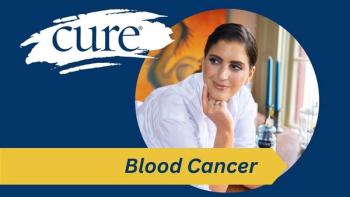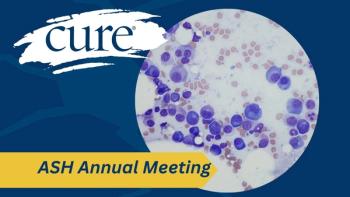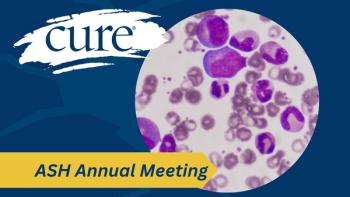
Receiving Treatment for Hairy Cell Leukemia
Transcript:
Robert J. Kreitman, M.D.: So your first treatment was cladribine, and then you had the pentostatin; is that right?
Vince Fazio: Well, I knew the chemotherapy by the name of 2CDA [cladribine].
Robert J. Kreitman, M.D.: Right.
Vince Fazio: That was my first treatment. And in fact, what had happened, I had to have several treatments over the course of that next 10 years or so. It seems like every two or two-and-a-half years I would have to get another treatment of 2CDA [cladribine]. I had three treatments, if I can remember correctly: it was three with 2CDA [cladribine], and the last one — I had a fourth treatment — was married up with another medicine called Rituxan.
Robert J. Kreitman, M.D.: Right.
Vince Fazio: I did not take Rituxan very well. But I got into a pattern where it was every two years that I’d have treatment. And when I had my first discussion with the hematologist, they said, “Oh, we have this treatment that’s 90-something % effective of getting rid of hairy cell in the first treatment.” Well, I was disappointed having to go through treatment with 2CDA [cladribine] multiple times over the next 10 years or so.
Robert J. Kreitman, M.D.: Right. The cladribine, the CDA, that patients get for the very first time is highly effective and as you say, has 90 complete remission. It varies a little bit — 75 %, 85 % up to 95 % — in different studies. But the question is, how long does it last? And what we know from studies is that it can take up to 15, 16 years for half of the patients to relapse. And so to relapse within a couple of years is early. And so now one of the things that’s really important is to not get retreated too early. You want to really have a need for treatment before you get more chemotherapy. And so we recommend that patients follow this one, 10 and 100 rule. In other words, the neutrophils less than one, or the hemoglobin less than 10, or the platelet count less than 100: one of those three.
There are some other criteria — if the spleen is very painful, if a patient is getting infections — but those are the main criteria. And a lot of people we feel get retreated with chemotherapy too early, before they really need treatment. But it sounds like you did need treatment.
Vince Fazio: Yes. During that 10-year period I was in the hospital four to five times with pneumonia, with my white cell count at .5 or below. It caused me to avoid crowds. I missed several family events because I was worried about getting pneumonia in that 10-year period. So that turned me into a germophobe.
Robert J. Kreitman, M.D.: Right. And after getting several of these courses of chemotherapy, I think maybe three, then you took a combination of pentostatin, which is similar to cladribine, but it was combined with rituximab, which is an antibody that works by a different mechanism. How was that like to take? What were the side effects that you had with rituximab?
Vince Fazio: On the very first treatment with Rituxan, I became allergic. I was itching all over. My fingers were itching, my neck was itching. And my sight, my vision started to close down on me, and what had happened is the doctor’s office put me in an ambulance and sent me to the emergency department. My blood pressure dropped to 60/40, and so they sent me over to the emergency department. They treated me with fluids, and I think it was Benadryl, and that’s what happened the first time. The second time I did end up with some red welts and things on my body. I did not take Rituxan very well.
Robert J. Kreitman, M.D.: This is a very common experience that patients have with rituximab, which is a very effective, a very important antibody, really a major advance in not only hairy cell leukemia, but in oncology and hematology in general over the past couple of decades. But it does cause what we call infusion reaction. And those infusion reactions can look like allergies: the welts, the low blood pressure, even high blood pressure. And you have to be careful. I know of a patient who had a heart condition that was exacerbated. In other words, there was a decrease in his heart function that really was like a heart attack. And fortunately, after a couple of days the heart function improved and came back to normal. But you have to be very careful when you give rituximab.
We have given hundreds of courses of rituximab. We give eight weekly doses, and we often find that the first couple of doses are more difficult to give than the subsequent courses. You have to give steroids to prevent side effects. But if properly given, patients can receive it safely.
And the other thing is that many patients stop getting rituximab because they feel that they’re allergic to it, their doctors are really not comfortable giving it. And really over the last 10 years we found that there’s no patient who we haven’t been able to give rituximab to, even if they are truly allergic to it, and we’ve had several patients who are. We just have to give it in a way that is called desensitization. You can get it safely that way. It’s more complicated. It has to be given over a whole day. It has to be given in an intensive care unit, but it’s very safe to do it that way. But I’m glad that you were able to get through the rituximab after the first couple of doses being a little rocky.
Transcript Edited for Clarity





